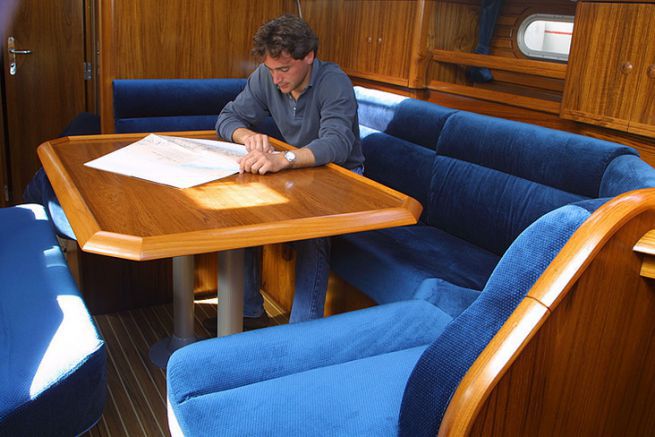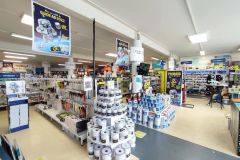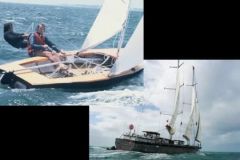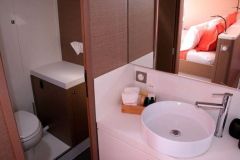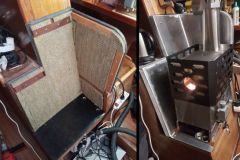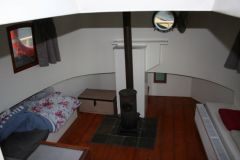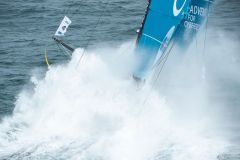Heating the interior of your boat meets two needs. The first is a matter of comfort to raise the temperature inside when it is cold outside. But the second purpose of heating is also to dry and dehumidify the interior. A boat, even in a hot climate, is often damp. Heating removes this moisture.
To choose your heater, you need to answer a few questions that will target the right type of equipment. To complete this study on heating, we have presented products from the latest Accastillage Diffusion 2018 catalogue.
Stand-alone or dockside?
If you only need your heater when your boat is docked, you can equip yourself with a booster heater. This is an appliance that operates on 220 V and will only be used when you are plugged in. But this heater will stop as soon as you set sail. An autonomous system (independent of the EDF network) works all the time.
Fast or with inertia?
When choosing the heating, one can opt for a system that rises very quickly in temperature, but has no inertia. This is the case for ceramic heaters with a fan. They quickly heat up the saloon or cabin of a boat, but the temperature goes down just as quickly as soon as the heating is switched off.
Oil-bath heaters rise much more slowly in temperature, but offer great inertia. The heat is softer and more comfortable.
The fan heater will be preferable if you just quickly pass on board. It heats up fast. The oil-bath radiator will be preferable if you live on board for some time, as it will take longer to heat up, but the heat will be much better distributed.
An autonomous but fixed heating system
The auxiliary heaters operate on 220 V, connected to the ground electrical network. However, heating may also be required when sailing at sea or even at anchor, far from a 220 V mains supply. To do this, you have to switch to a fixed installation. This is a mini-boiler installed in the boot of the boat which produces heat by burning diesel oil or Kerdane. The air thus heated is blown through ducts to the cabins.
This is a fixed installation that requires ductwork and fuel supply. In the case of diesel fuel, it can be connected to the tank that feeds the engine, for Kerdane, an additional tank must be added.
Autonomous, this heater works whether you are in port, at anchor or at sea, even if you are listing. It consumes little energy and remains quiet.
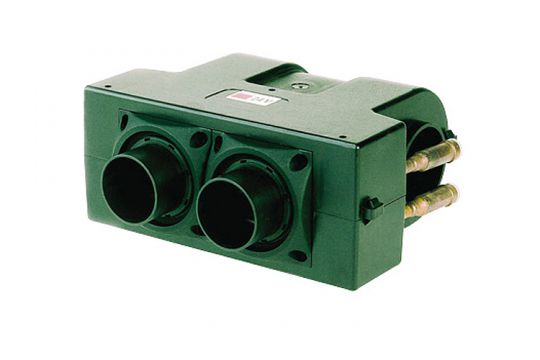
Seacolory, an original solution
Directly connected to the engine cooling system, this heater only works when sailing (engine running). It is a small radiator equipped with a fan that diffuses the heat from the engine into the cabin. Inexpensive (265 euros), this system is suitable for sailors who need heating while sailing. It is particularly suitable for fishermen who like to keep the inside of their wheelhouse warm during long periods of dragging. The advantage of this type of heating is that it does not consume any additional energy, just that the heat from the engine is well distributed!
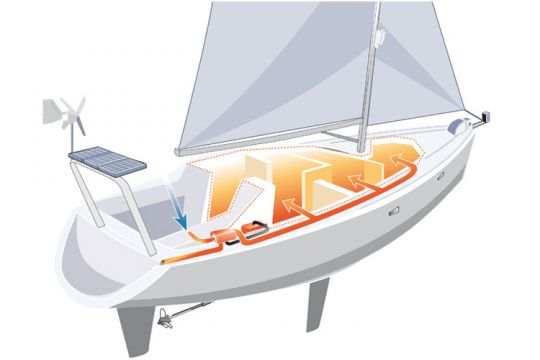
How much power for how much volume?
The power of a heater is expressed in watts. There are devices ranging from 500 to 5000 W. To find out its need, it is possible to make a ratio between the volume of a cabin (in cubic meters) and the power in watts.
- 500 W -> 5 m3
- 2000 W -> 20 m3
The different solutions in the catalogue Accastillage Diffusion
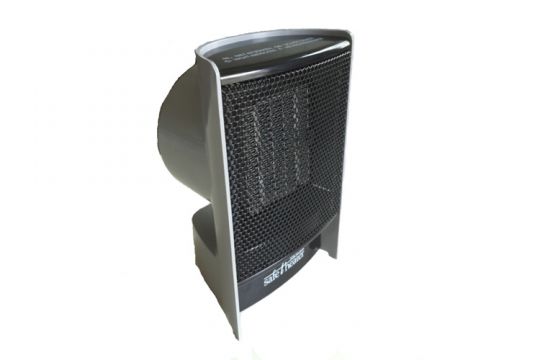
Ceramic heating with 500 to 2000 W
Benefits
- Unbeatable price (from 25.90 euros)
- Very fast rise in temperature
- Small size for easy storage
Disadvantage
- 220 V network
- No temperature inertia
- Fan noise

Oil-bath radiator from 500 to 2000 W
Benefits
- Competitive price (from 37.80 euros)
- Reasonable consumption (lower than ceramics)
- Gentle and comfortable warmth
- Good temperature inertia
- Silencer
Disadvantage
- 220 V network
- Congestion, difficult to fit in navigation
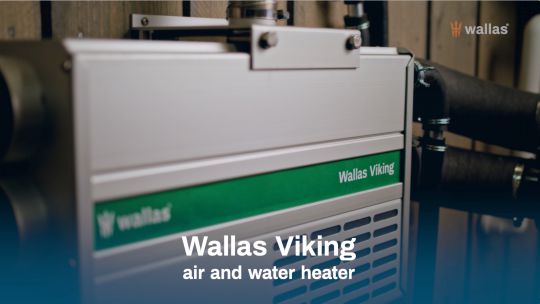
Fixed installation (Diesel or Kerdane) from 1200 to 5500 W
Benefits
- High power available
- Low fuel consumption
- Autonomy (no need for 220 V power supply)
- Silencer
- Remote control available
- Works everywhere, even in the gîte
Disadvantage
- More complex installation than portable systems
- Power consumption 12 V
- Awards
